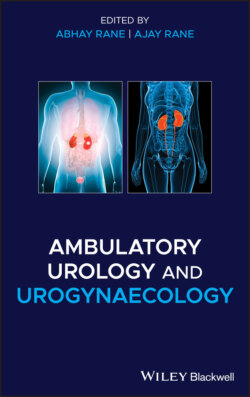Читать книгу Ambulatory Urology and Urogynaecology - Группа авторов - Страница 22
Setting Up an Ambulatory Centre
ОглавлениеPlanning a new ambulatory unit is a major undertaking. A board team, consisting of at least a surgeon, anaesthetist, nurse, and project manager should be set up. Market research must be performed, considering demand and financial viability. Local health authorities and regulatory bodies must be involved. The location must be identified taking into account transport links, and infrastructure must be decided upon.
Staff must be recruited and appropriately trained. Nurses must be educated in pre‐operative triage/assessment and be trained in assessing patients post‐operatively for discharge using standardised protocols. They should be able to engage the patient and family in the process of ambulatory surgery to ensure compliance and success. Anaesthetic teams must be trained in appropriate techniques for day surgery. Surgical teams must stay up to date with guidelines, such as the British Association of Day Surgery (BADS) directory, which makes recommendations on which procedures are appropriate in the ambulatory setting. All groups should demonstrate competency in dealing with emergency scenarios.
An ambulatory surgical checklist should be developed and tailored to different specialities. Staff should be trained in communication skills. The ‘Situation‐Background‐Assessment‐Recommendation (SBAR)’ tool is a useful framework. Formal training in teamwork should ideally be given, generating a patient‐centred culture of safety. Systems should be established to deal with unprofessional behaviour, mistakes, and complaints. An audit and quality improvement team must be set up. Staff must be trained in hand hygiene and infection control.
The design of the unit is central to its success. The capacity must be determined, including theatre number and bed number. From this, an estimate of size can be extrapolated. The board team and architect must decide on build type, storage, and sterilisation facilities. They then must consider which ‘model’ to follow. The ‘racetrack’ model has a uni‐directional flow path, meaning that pre‐ and post‐operative patients are not mixed and there is no congestion of flow. The disadvantage of this model is that more space is required to house pre‐ and post‐operative patients in separate areas and at certain times of the day, there will be unused space. The ‘non‐racetrack’ model conversely does mix patients, economising on space, but possibly at the detriment of quality.
Following this, members of the board team need to consider space for reception, patient's changing rooms, toilets, consulting rooms, staff common rooms and catering facilities. Medical gas supply must be incorporated into the design. Hardware such as trolleys, operating tables, beds, blood fridges, and emergency trolleys must be thought out. Operating theatres must be designed and anaesthetic equipment taken into account.
Following the design, a business plan should be constructed, including the capital costs, income, and expenditure over the next five years. This will need to be presented to investors or local funding panels
